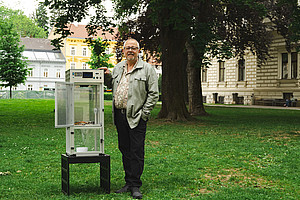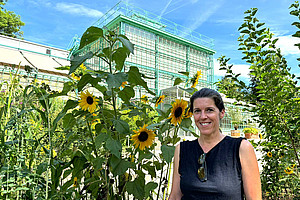Together, Annemarie Seither-Preisler and Peter Schneider from the Department of Psychology at the University of Graz followed the musical development of 220 children between the ages of eight and 18. Around half of them were affected by various developmental problems such as ADHD, ADD or dyslexia during their development. The Journal of Neuroscience has just published the results of this study, which focussed on the test subjects, whose development was unremarkable.
46 of them received no further musical instruction beyond music lessons at school, while 66 participants learnt to play different instruments. They were examined a total of five times over twelve years. Both the changes in the brain and the hearing ability were investigated.
The results are clear: Children with music training were not only able to distinguish pitches, timbres, tone durations and rhythms much better, but were also better able to recognise the fundamental tone of harmonic sounds with increasing age. The latter is an essential prerequisite for recognising different instruments and their melodies in an orchestra, for example, or for correctly interpreting the emotional content of a conversation, which is expressed in the pitch progression.
More nerve cells
The size and shape of the auditory areas in the brains of the music-making and non-music-making test subjects also showed striking differences. Surprisingly, these individual anatomical characteristics already existed at the beginning of the study, with high volumes of grey matter (nerve cells of the cerebrum) in the so-called Heschl's transverse convolutions, primarily in the right hemisphere, predicting a high motivation to make music later on.
In other words: Musicality appears to be inherent to a certain degree. However, there were also changes in the brain directly caused by making music. The more music was played in childhood and adolescence, the greater the activation of the brain areas mentioned. Making music therefore also trains the brain independently of individual talent.
A playful approach to music
What does this mean for parents? “It is advisable to give every child an initially playful approach to music. After all, making music and singing is an investment in the perception of the world that surrounds us. Later cognitive abilities are largely based on the ability to perceive our world in a differentiated sensory way”, says study author Seither-Preisler.
Future research now aims to promote the potential of musical hearing in children and young people with learning and developmental difficulties with the help of active auditory training programmes. This is because often there are also problems with acoustic perception and communication at the same time. In particular, such training programmes are to be tested on people with autism spectrum disorder, AD(H)S and dyslexia.
Publication
Neuroanatomical Disposition, Natural Development, and Training-Induced Plasticity of the Human Auditory System from Childhood to Adulthood: A 12-Year Study in Musicians and Nonmusicians; Peter Schneider, Dorte Engelmann, Christine Groß, Valdis Bernhofs, Elke Hofmann, Markus Christiner, Jan Benner, Steffen Bücher, Alexander Ludwig, Bettina L. Serrallach, Bettina M. Zeidler, Sabrina Turker, Richard Parncutt and Annemarie Seither-Preisler




